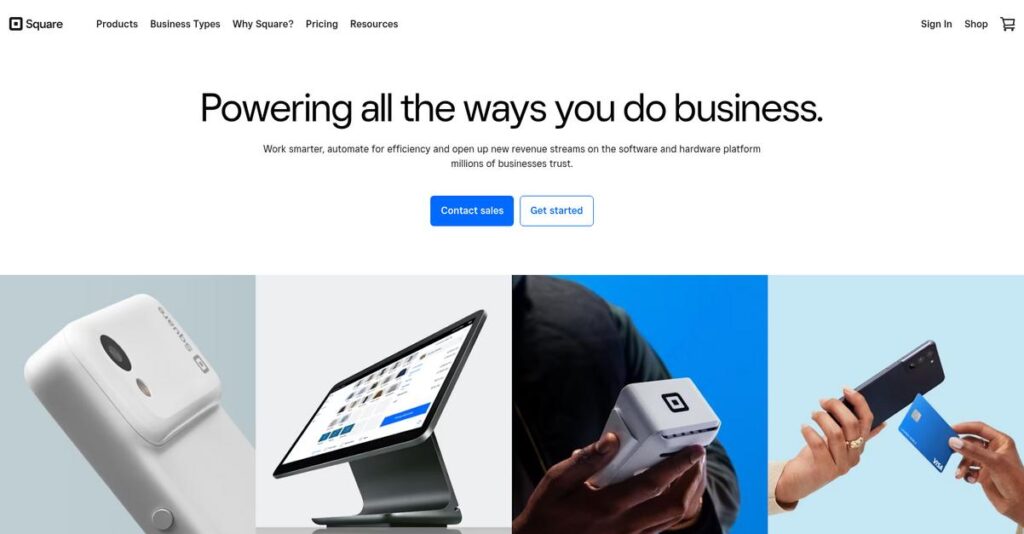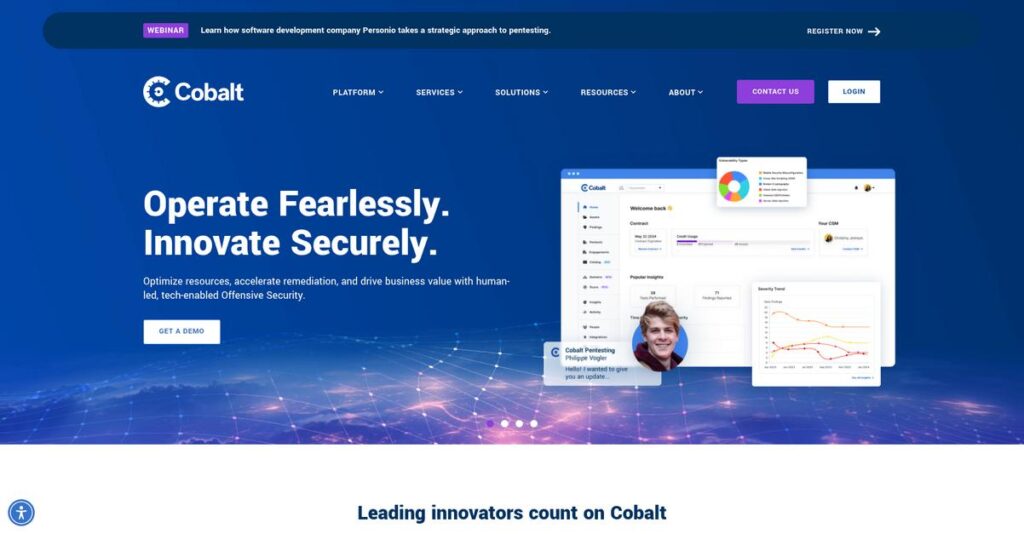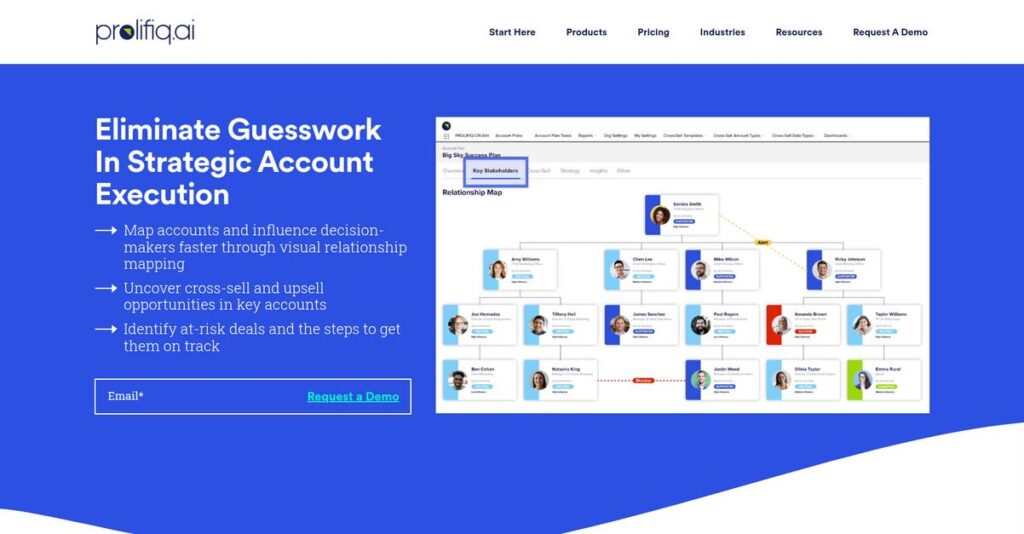POS headaches don’t have to slow you down.
If you’re dealing with outdated registers, clunky back-office tasks, or tangled software, you’re likely searching for something far more intuitive—something Square promises to deliver.
From my review of dozens of payment platforms, I found the real issue is wasting hours wrestling with fragmented tools instead of actually helping your customers and growing sales.
After researching Square’s platform, I discovered they focus on simplifying commerce with an ecosystem that merges payments, point of sale, e-commerce, invoices, payroll, and banking—all managed in one unified system.
So in this Square review, I’ll break down how Square helps your team save time and stress through its all-in-one approach.
You’ll see what I uncovered about features, true pricing, setup details, and how Square stacks up to options like Clover and Shopify.
By the end, you’ll know exactly what features you need to streamline selling, payments, and business management.
Let’s dive into the details.
Quick Summary
- Square is an all-in-one payment and business management platform designed to simplify sales, inventory, and payroll for small businesses.
- Best for new or small businesses needing simple setup and unified solutions across in-person and online sales.
- You’ll appreciate its integrated ecosystem that centralizes payments, inventory, and customer data without complex setup.
- Square offers flat-rate transaction pricing with a free basic POS and optional paid plans, including free trials on premium features.
Square Overview
Square has been around since 2009, based in San Francisco. What impressed me during my research is their clear and consistent mission: making commerce simple and accessible.
I found they squarely target small to medium-sized businesses—think independent retail shops, bustling restaurants, and solo service pros. You’ll notice their approach isn’t just selling software, but offering a complete, unified ecosystem for your entire business operation.
Speaking of small business growth, my guide on best small business loyalty programs software can help boost repeat sales.
Their 2022 Afterpay acquisition was a smart move into ‘buy now, pay later’ financing. This is a critical development you should consider for this Square review.
Unlike competitors which are more specialized, like Toast for restaurants, Square’s power is its integrated breadth. From my evaluation, their unique value is providing a truly all-in-one commerce platform that scales.
They work with millions of sellers globally, establishing significant market trust. You’ll see their systems used by local coffee shops, independent boutiques, and growing service companies.
Here’s what stood out to me: their entire strategy is about deep ecosystem integration. By combining payments, software, and banking, they remove the headache of you managing multiple, disconnected vendor accounts.
Now let’s examine their capabilities.
Square Features
Fragmented systems making business hard?
Square solutions offer a connected ecosystem of tools designed to run your entire business from one place. Here are the five core Square solutions that simplify operations for small businesses.
1. Square Point of Sale (POS)
Tired of clunky checkout systems?
Outdated registers and separate payment terminals create friction, slowing down sales and frustrating customers. This can really impact your in-store efficiency.
Square POS turns your device into a complete sales hub, eliminating checkout headaches. From my testing, the intuitive interface makes training quick, allowing you to process payments, manage inventory, and track sales data seamlessly. It’s the central nervous system for your in-person business.
This means you get a powerful, yet simple, system that improves checkout speed, streamlines inventory, and keeps all your sales data organized.
While we’re discussing financial aspects, understanding enterprise legal management software is equally important for mitigating risks.
2. Square Online
Selling online and in-store a nightmare?
Managing separate inventories for your physical store and e-commerce site often leads to overselling or stock discrepancies. This causes customer disappointment and manual fixes.
Square Online automatically syncs your inventory between in-person and online sales, ensuring accuracy. Here’s what I found: it simplifies omnichannel management by connecting directly to your POS. You can build a complete e-commerce site with options for in-store pickup and local delivery. This solution saves you major headaches.
The result is a unified sales channel where your stock is always accurate, allowing you to serve customers efficiently both online and offline.
3. Square Invoices
Struggling to get paid for services?
Manually tracking invoices and chasing payments can consume precious time for service-based businesses or freelancers. This impacts your cash flow and productivity.
Square Invoices streamlines your billing, replacing manual spreadsheets with professional digital invoices. From my evaluation, this feature works best when you need to track client payments effortlessly. You can send customized invoices via email or text, monitor their status, and send automated reminders, all through Square’s system.
This means you can professionalize your billing process, get paid faster, and spend less time on administrative tasks, freeing you to focus on your core services.
4. Square Payroll
Payroll tasks eating up your week?
Calculating employee hours, taxes, and handling filings is complex and time-consuming for small businesses. One mistake can lead to costly penalties.
Square Payroll integrates directly with your Square POS timecards to automate payroll runs, including direct deposits. What impressed me most is how it automatically handles tax calculations and filings for you. This solution takes the stress out of compliance and ensures your employees are paid accurately and on time.
So as a business owner, you gain back valuable time, reduce compliance risks, and ensure your team gets paid without the usual payroll headaches.
5. Square Banking & Capital
Need flexible funding for your business?
Traditional banking and loan applications are often slow and inaccessible for small businesses seeking quick capital. This can stifle growth opportunities.
Square Banking & Capital offers integrated financial services and funding based on your sales history. From my testing, this feature really shines for its simplified loan application process. You can access business checking with no monthly fees, and Square Capital provides loans with flexible repayment as a percentage of daily sales. This solution empowers your financial growth.
What you get instead is rapid access to capital tailored to your sales, plus an integrated banking solution that simplifies financial management.
Pros & Cons
- ✅ Seamless integration of payments, POS, and online store.
- ✅ Highly intuitive interface makes setup and daily use easy.
- ✅ Transparent flat-rate pricing is simple and predictable.
- ⚠️ Customer support is difficult to reach for urgent issues.
- ⚠️ Accounts can be suddenly held or terminated, risking funds.
What I love about these Square solutions is how they work together as a powerful, unified business ecosystem rather than separate tools. This cohesion allows you to manage nearly every aspect of your business from one platform.
Square Pricing
Feeling confused about payment processing costs?
Square pricing is celebrated for its transparency, offering a clear-cut model combining processing fees with optional software subscriptions, making budgeting straightforward.
| Plan | Price & Features |
|---|---|
| Core Processing & Free POS | 2.6% + 10¢ (in-person) / 2.9% + 30¢ (online) per transaction • Free unlimited POS for all devices • Inventory management (basic) • Customer directory • Basic reporting |
| Square for Retail/Restaurants Plus | $60/month per location + processing fees • Advanced inventory reporting • Purchase order management (Retail) • Table/course management (Restaurants) • Team management tools |
| Square Appointments Plus | Starts at $29/month per location + processing fees • Multiple staff calendars • Automated confirmations & reminders • Waitlist functionality • Recurring appointments |
| Premium Plans | Custom pricing – contact sales • Tailored solutions for large businesses • Dedicated support • Advanced integrations & features • Multi-location management |
1. Value Assessment
Transparent value, clear investment.
From my cost analysis, Square’s transparent transaction fees and tiered software plans mean you only pay for what you use, especially with their robust free POS. What truly impressed me is how their pricing scales naturally with your business growth, preventing unexpected jumps in cost.
This allows your budget to adapt, ensuring you get maximum value without upfront financial strain.
Speaking of maximizing business value, exploring online reputation management software can turn feedback into brand advantage.
2. Trial/Demo Options
Evaluate before you commit.
Square offers a robust free plan for its core POS, letting you thoroughly test its functionality before upgrading. What I found invaluable is that paid software tiers typically offer free trials, allowing you to explore advanced features like appointment booking or detailed inventory.
This helps you evaluate software fit, ensuring your budget is wisely spent on proven solutions.
3. Plan Comparison
Choosing the best plan.
The core free POS is fantastic for startups, while Plus plans offer industry-specific tools that truly enhance operations. Budget-wise, what stands out is how Premium plans offer tailored enterprise solutions for large, multi-location businesses needing custom features and dedicated support.
This helps you match pricing to your actual business needs, ensuring optimal functionality for your budget.
My Take: Square’s pricing is highly accessible for SMBs, offering predictable transaction fees and scalable software tiers that grow with your business, making it a budget-friendly choice.
The overall Square pricing reflects predictable costs and scalable value for your business.
Square Reviews
What do Square users really experience?
To understand what actual customers think, I dove deep into countless Square reviews from platforms like G2 and Capterra. This analysis reveals key patterns and insights into the real-world user experience with Square.
1. Overall User Satisfaction
Most users find Square very satisfying.
Overall satisfaction is consistently high, particularly among small businesses and new users. From my review analysis, the platform’s accessibility consistently stands out, making it incredibly easy for entrepreneurs to get started without technical hurdles. User reviews frequently highlight this initial positive experience.
Ease of setup and intuitive operation drive this high satisfaction. Customers value the straightforward nature and minimal learning curve.
2. Common Praise Points
Simplicity and integration are user favorites.
Users consistently praise Square’s unparalleled ease of use, often describing it as ‘plug-and-play’. What I found in user feedback is how the all-in-one ecosystem simplifies operations, seamlessly connecting POS, inventory, and online sales. Transparent, flat-rate pricing also earns high marks in reviews.
This integrated approach means you avoid multiple systems and complex integrations, streamlining your entire business workflow from day one.
3. Frequent Complaints
Support and account issues frustrate some.
The most frequent complaint revolves around customer support, with users reporting difficulty reaching live agents. Review-wise, sudden account holds are a major concern, with funds frozen for weeks. Higher volume businesses also find flat-rate fees costly as they scale.
While customer support is a common frustration, the account holds represent a significant business risk for users, potentially disrupting cash flow seriously.
What Customers Say
- Positive: “Having our online store inventory sync perfectly with our in-store POS is a game-changer, saving us from many headaches.”
- Constructive: “Getting support is a nightmare. When our reader went down, we couldn’t get anyone on the phone for hours, which is unacceptable.”
- Bottom Line: “My account was held for ‘suspicious activity’ after a big sales weekend, nearly putting us out of business due to held funds.”
Overall, Square reviews paint a clear picture of highly accessible tools for small businesses. While support frustrations exist, the core product value is undeniable for many entrepreneurs. You’ll find a robust ecosystem here.
Best Square Alternatives
Navigating payment processor choices feels complex.
Navigating the crowded payment processing market can be tricky. Beyond Square, the best Square alternatives offer distinct advantages, each designed for specific business models and operational priorities you might have.
1. Shopify
Prioritizing an online store with powerful e-commerce tools?
Shopify is an e-commerce powerhouse where POS is complementary. If your business is primarily online, this alternative provides industry-leading tools for SEO, marketing, and extensive app integrations. What I found comparing options, Shopify offers unparalleled e-commerce ecosystem depth for online sales growth.
Choose Shopify when your revenue heavily relies on online sales and you need best-in-class e-commerce functionality over a POS-first solution.
While exploring tools to streamline operations, understanding patient case management software is also crucial for specialized care providers.
2. Toast
Running a restaurant with specialized operational needs?
Toast is purpose-built for the restaurant industry, offering deep features like advanced KDS, integrated online ordering, and guest feedback tools that Square for Restaurants may lack. From my competitive analysis, Toast provides superior restaurant-specific functionality for complex food service operations, though it typically requires custom hardware.
You’ll want to consider Toast if you run a full-service restaurant or complex F&B operation demanding deeply integrated, industry-specific management.
3. Stripe
Building custom online experiences with developer control?
Stripe is a developer-centric payment platform, ideal if you’re building custom websites, apps, or marketplaces and need maximum flexibility through APIs. Alternative-wise, Stripe offers unparalleled payment integration customization for online developers, though it doesn’t provide a native, integrated POS system.
For your specific needs, choose Stripe when developing a bespoke online platform and requiring extensive control over your payment infrastructure.
4. PayPal
Needing a simple mobile reader for quick payments?
PayPal’s Zettle offers a functional mobile POS ideal for very small businesses or those already heavily invested in PayPal’s ecosystem. What I found comparing options, PayPal Zettle excels in simple mobile transactions with low overhead, though its integrated ecosystem isn’t as robust as Square’s.
Consider PayPal when your primary need is a straightforward mobile card reader, especially if customers frequently use PayPal.
Quick Decision Guide
- Choose Square: Unified in-person and online sales with integrated business tools.
- Choose Shopify: Primarily an online store needing powerful e-commerce and app integrations.
- Choose Toast: Complex restaurant operations requiring industry-specific, deep management features.
- Choose Stripe: Developing custom online platforms with high demand for payment API flexibility.
- Choose PayPal: Simple mobile card processing with strong customer preference for PayPal payments.
Ultimately, the best Square alternatives aren’t about one-size-fits-all, but about aligning features with your unique business needs and growth plans. Carefully evaluate your priorities.
Setup & Implementation
Square’s implementation is surprisingly straightforward.
For businesses considering Square, my Square review indicates a refreshingly simple deployment. This section will set realistic expectations, guiding you through what it truly takes to get Square up and running.
1. Setup Complexity & Timeline
Ready for a truly easy setup?
Square’s initial setup is exceptionally straightforward, designed for non-technical users. You can create an account online in minutes, and hardware like the Square Reader is largely plug-and-play. What I found about deployment is that you’ll be taking payments very quickly, often within an hour for basic configurations. Full item library setup takes longer.
Plan to spend time configuring your item library, taxes, and settings through the intuitive app or web dashboard.
2. Technical Requirements & Integration
Minimal technical hurdles here.
Technical requirements for Square are minimal: primarily a stable internet connection and a compatible smartphone or tablet. Square has an offline mode, processing payments once connectivity returns. From my implementation analysis, it integrates seamlessly with your existing mobile devices, avoiding costly hardware purchases. The largest implementation risk often isn’t technical, but managing potential account holds.
Ensure you have reliable internet access and verify your existing mobile devices are compatible before beginning your Square deployment.
If your operational needs extend beyond general business, my article on Laboratory Information Management System covers specialized lab operations.
3. Training & Change Management
Expecting an easy training process?
The learning curve for Square is remarkably gentle, mirroring common consumer apps for instant familiarity. This makes it incredibly easy for your staff to pick up quickly. Implementation-wise, your training needs will be refreshingly minimal due to the intuitive interface. Square provides extensive online knowledge bases and video tutorials for self-service learning.
Encourage your team to explore the robust online resources Square offers to quickly master the system’s features and workflows.
4. Support & Success Factors
Consider support limitations upfront.
While Square’s self-service resources are excellent, accessing live human support can be a significant challenge, often funneled through chatbots. This is a critical factor for your implementation success. What I found about deployment is that procedural risks, like account holds, are real. Prepare for potential disruptions if your transaction patterns seem unusual.
Familiarize yourself with Square’s support channels and be proactive in understanding potential account review policies.
Implementation Checklist
- Timeline: Minutes to days for basic setup, weeks for full configuration.
- Team Size: Owner-managed or single staff member for setup.
- Budget: Primarily hardware costs; core software is often free.
- Technical: Stable internet and compatible iOS/Android device.
- Success Factor: Proactive understanding of account hold policies.
Overall, Square implementation is refreshingly simple for most businesses, especially smaller ones. However, you must understand the account hold risks to ensure your operational continuity and long-term success.
Who’s Square For
Your business needs the right payment partner.
This Square review analyzes who benefits most from its ecosystem. I’ll help you quickly determine if Square aligns with your specific business profile, team, and use case requirements.
1. Ideal User Profile
Starting fresh or scaling easily.
Square is a perfect fit for new businesses and emerging SMBs like coffee shops, boutiques, food trucks, or hair stylists. You’ll find its intuitive setup and integrated system ideal if you need a unified solution for payments, inventory, and online sales. From my user analysis, it excels for quick-service operations.
You’ll see success if your priority is getting up and running fast with minimal technical hassle.
2. Business Size & Scale
Small teams, growing operations.
Square is tailor-made for small-to-medium businesses (SMBs) with teams typically 1-50 employees. What I found about target users is that it handles significant transaction volumes, but large, high-volume businesses might find rates less competitive. User-wise, it’s perfect for single or multi-location small retail and service businesses.
While safeguarding your business data is crucial, understanding how to recover lost essential information is equally vital.
You’ll find Square scales well from startup phase through moderate growth, supporting your evolving needs without requiring complex IT infrastructure.
3. Use Case Scenarios
Integrated sales and service management.
Square shines in specific scenarios: brick-and-mortar retail, mobile businesses, quick-service restaurants, and service professionals. If your workflow involves taking payments, basic inventory, and integrating online sales, you’ll appreciate its tightly integrated ecosystem. You’ll find this works well for omnichannel management.
Your primary use case should center around straightforward transactions and unified sales channels, streamlining operations from sales to basic reporting.
4. Who Should Look Elsewhere
Not for complex, high-volume operations.
If you’re a large, high-volume business, complex restaurant needing deep customization, or e-commerce-heavy brand, Square might not be your best fit. From my user analysis, concerns about account holds and scaling costs often arise. Your situation calls for different solutions.
Consider traditional interchange-plus merchant accounts, specialized restaurant POS (like Toast), or dedicated e-commerce platforms (like Shopify) for better alignment with your advanced needs.
Best Fit Assessment
- Perfect For: New businesses, SMBs, mobile vendors, service professionals, omnichannel retail.
- Business Size: Startups to mid-sized businesses (1-50 employees) with moderate transaction volume.
- Primary Use Case: In-person and online payments, basic inventory, unified sales channels.
- Budget Range: Businesses seeking predictable flat-rate processing with minimal upfront costs.
- Skip If: High-volume enterprise, complex restaurant, e-commerce-heavy, or zero tolerance for fund holds.
Overall, who should consider this Square review depends on your business’s simplicity and growth stage. You’ll thrive with Square if you prioritize ease of use, integrated tools, and transparent pricing for your daily operations.
Bottom Line
Square: Simple operations, powerful results.
This comprehensive Square review provides my final assessment, guiding your decision through its strengths, limitations, and specific ideal use cases. I’ll help you confidently navigate your next steps.
1. Overall Strengths
Square truly excels at simplicity.
Square offers an incredibly intuitive, ‘plug-and-play’ setup, making it ideal for new and small businesses. Its unified ecosystem expertly manages inventory, sales, and online orders in one place. Its transparent, flat-rate pricing is highly valued.
These strengths allow businesses to quickly adopt the system, reduce operational headaches, and enjoy predictable costs, driving immediate value and efficiency for new users.
2. Key Limitations
However, Square has notable drawbacks.
Customer support is a significant pain point, often routed through chatbots rather than live agents, causing frustration during urgent issues. Account holds are a serious business risk. Also, flat-rate fees can become expensive for high-volume operations.
While customer service can be frustrating, the risk of sudden account holds represents a potential deal-breaker for any business owner.
While we’re discussing business risks, understanding how to securely manage patient data with best patient registration software is equally important.
3. Final Recommendation
So, should you choose Square?
I recommend Square for new, small, or mobile businesses prioritizing ease of use, integrated operations, and transparent fees. It’s perfect for quickly getting started. However, if customer support or high transaction volumes are critical, consider alternatives.
Your decision should carefully weigh its unmatched simplicity against potential support frustrations and the inherent account-hold risks before fully committing.
Bottom Line
- Verdict: Recommended with reservations
- Best For: New, small, or mobile businesses prioritizing ease of use
- Biggest Strength: Intuitive all-in-one ecosystem with transparent pricing
- Main Concern: Customer support challenges and sudden account holds
- Next Step: Sign up for a free account and explore the system
This Square review concludes that it’s a powerful tool for many, but its limitations demand awareness. I have high confidence in this assessment for its target audience.





